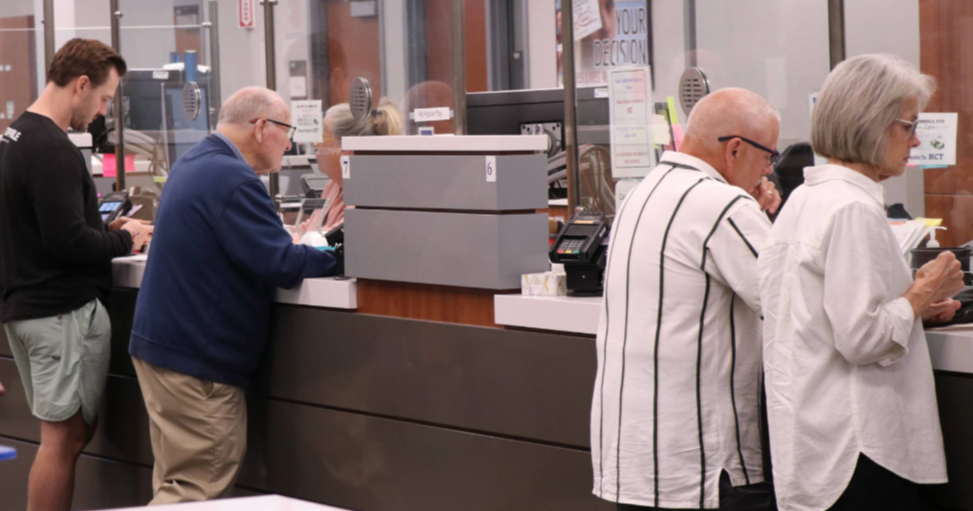Navigating REAL ID: How our Service Centers support residents
10-27-2025

When the REAL ID deadline arrived in May 2025, Hennepin County Service Center staff were at the forefront of helping residents navigate the transition.
The REAL ID Act, passed by Congress in 2005, established new security standards for state-issued driver’s licenses and ID cards. Minnesota residents now have three options:
a standard driver’s license
a REAL ID
an enhanced driver’s license
Knowing which one to get, and what documents are required, has caused confusion among residents. “Our staff spend an enormous amount of time explaining the different requirements and uses for each type of card,” said Neng Lor, regional manager for the Government Center and Southdale Service Centers. “It’s not always clear to residents, and that can be difficult.”
Service Center staff, who work directly with residents on everything from marriage licenses to vehicle tabs, see the frustration firsthand.
“Many customers are feeling frustrated over the [direction] provided by the state. They feel it’s hard to understand,” said Sr. Service Representative Lora Jiracek. “I explain to them in detail what forms are needed and what each license will allow them to do. I also go through all their paperwork at the front desk to make sure they don’t need to make numerous trips.”
Despite the complexity of the process, Service Center staff have become experts at guiding residents thought the requirements and easing their concerns.
“The crew here at Southdale are rock stars,” said Jiracek. “They’re patient and they enjoy helping customers as best they can. They’re also empathetic to the customers feelings and frustrations.”
Adjusting processes to meet demand
Between January 1 and September 1, 2025, Hennepin County Service Centers processed more than 180,000 ID applications – including REAL ID, enhanced, and standard driver’s licenses – marking a 9% increase from the same period in 2024. Of those, more than 85,000 were REAL IDs, representing a 66.75% increase from the previous year.
With so many residents needing updated IDs, Service Centers have had to continually adapt their processes. A couple of years ago, staff began reviewing each customer’s documents at the front desk, which helped flag problems but also created long lines.
While the goal is always to reduce wait times and improve the experience, staff have also had to balance changes from the state with the realities of what residents bring in and the questions they ask.
“It gets repetitive answering the same questions over and over again,” said Lor, “It's important for us to keep an open mind and remember that it's the first time for the person asking."
The county encourages residents to use Minnesota’s REAL ID pre-application system, which guides them step by step through the requirements before they even arrive. An e-service unit supplements that support, answering questions through phone, email and chat so residents who can’t come in person can still get help.
“Our staff has been very flexible and amendable to changes,” said Lor. “Their ability to adapt to new procedures and keep a positive attitude has been instrumental in managing the high volume of applications.”
Moving forward
Lor emphasized that frontline workers are the heart of the REAL ID effort. “They make the biggest difference,” he said. “Their hands-on approach and dedication to helping residents navigate the REAL ID process are commendable.”
For residents still needing to make the switch, preparation is key. Lor encourages people to use the pre-application tool, review the county website, and make an appointment before visiting. Above all, though, Service Center staff recommend that residents review the list of required documents before applying for their REAL ID.
“These steps can save a lot of time and stress,” said Lor. “We want people to feel supported and confident when they come to us.”
By adapting processes, providing remote support and relying on the expertise of staff, Hennepin County Service Centers continue to ensure residents have what they need to successfully navigate the REAL ID transition.
